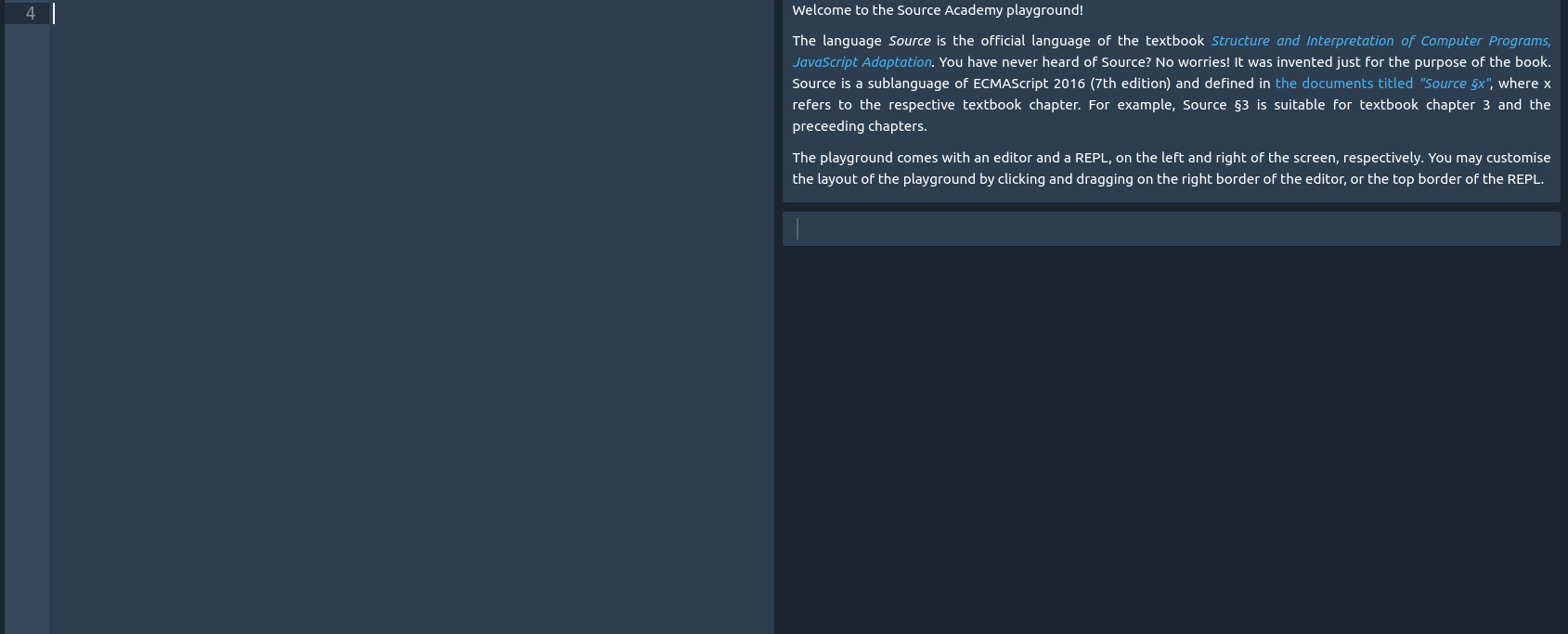Lessons learned writing the Source Stepper - Part 1
In this part, I will talk about what is the Source Language, what is the Source Stepper, and some prior knowledge to understanding how the Source Stepper Works.

What is the Source Stepper?
The Source Stepper is an implementation of the Source language that is purely based on lambda calculus-style substitution rules. The Source language is a family of languages, split into 4 chapters, each a sub-language of the next, and all are EcmaScript2016-compliant.
This means, all programs written in Source would be a valid JavaScript program. Additionally, it has proper tail call optimizations and arrow functions. Proper tail call optimizations would allow the code snippet below, written in Source 1, to only take up constant stack space.
function factorial(n) {
// arrow functions are allowed
const fac_helper = (n, res) => (n === 1 ? res : fac_helper(n - 1, n * res));
// tail call optimization
return fac_helper(n, 0);
}
What is the Source language for?
 Artwork that goes into the Source Academy, the immersive platform for CS1101S.
Artwork that goes into the Source Academy, the immersive platform for CS1101S.
The Source language was designed by Prof Martin Henz for teaching the CS1101S Programming Methodology class at the National University of Singapore, using a JavaScript adaptaion of the famous Structure and Interpretation of Computer Programs (SICP) textbook. In fact, the textbook is freely available as PDF, EPUB, and Mobile-friendly Web editions.
Why the Source Stepper?
A bit of background: the SICP textbook introduces the Substitution Model of evaluation, similar to the beta-reduction of lambda calculus, to explain the evaluation of programs without state changes (ie. variables that change values etc). This Substitution Model of evalutaion persists through the first 2 chapters of SICP-JS textbook.
The Source Stepper is hence designed to be a debugger that shows each evaluation(substitution) step of the Substitution to the student, to aid the students in understanding the model, as well as debugging their programs.
How does the Source Stepper work?
Background: Abstract Syntax Trees
Before this, I had to first understand how a program is represented. First, let us look at an analogy:
An essay is made up of paragraphs, which in turn, contains any number of sentences. There are many types of sentences (grammatically), and each contains a different combination of phrases, like
(I) (go) (to the park) (for a walk) (on Sundays).
A program, is made of up of source files, which in turn, each source file contains any number of statements. Each different statement, such as a function declaration statement, or a block statement, are made up of different components of statements/expressions.
// Source 1
// function statement
// "id" and "n" are identifiers, an expression
function id(n) {
// block expression
// return statement
return n;
}
Here is a table to sum them up:
| Essay | Program | Remarks |
| ---------- | ---------------------- | ------------------------------------------------- |
| Paragraphs | Source files | |
| Sentences | Statements | |
| Phrases | Statements/Expressions | A statement can contain other statements as well. |
Turns out, there is this website (astexplorer.net) which helped me greatly in decomposing programs into ASTs. Plug in some programs and start playing!
Reduction and Substitution
Strictly speaking, the evaluation program can be expressed by this pseudocode:
function EvaluateProgram(program):
while program is not empty:
firstStatement = get first statement from program
if firstStatement is irreducible:
remove firstStatement from program
else:
reduced = reduce the first statement of program
replace program's first statement with 'reduced'
continue
And thus there are only two things we should decide:
- What kind of statements are irreducible, and hence can be discarded?
- How do you reduce a statement?
Yee Jian has been busy with school work, and will update this post intermittently.